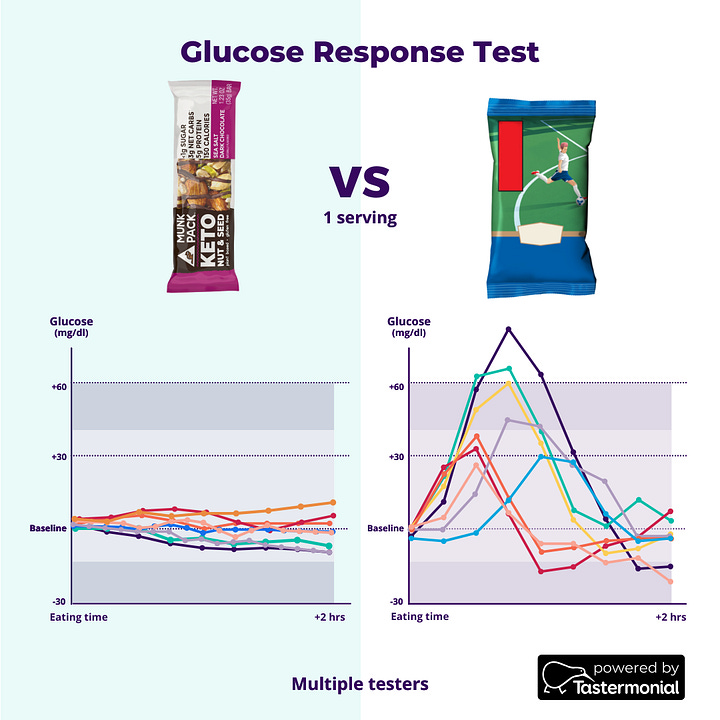It was just another Wednesday morning, and like usual, I was scrolling through my inbox, sifting through emails that had piled up overnight. One subject line from Amazon, however, caught my attention: “Notice Regarding Class Action Lawsuit” Expecting some promotion, I clicked on it—only to find a surprising announcement.
The email was about a class action lawsuit settlement against Clif Bar for customers who had previously purchased the bars. It explained how the company had been accused of making misleading claims about its bars providing "Nutrition for Sustained Energy". This wasn’t just about the regular Clif Bars either—Clif Kid ZBars were also part of the lawsuit, with statements like “Nourishing Kids in Motion” under scrutiny. The lawsuit alleged that these claims didn’t align with the actual nutritional impact of the products.
As a parent who enjoys outdoor activities like mountain biking and hiking with my kids, I’ve often seen other parents handing out Clif Bars and ZBars to their children on the trail, believing these bars are the perfect fuel for an active lifestyle. After receiving this email, I felt a responsibility to share what I’d learned.
The Clif Bar Lawsuit: What Really Happened?
According to the lawsuit, Clif Bars and Clif Kid ZBars had misrepresented their ability to provide "sustained energy." High sugar content was a central issue. Despite being marketed as healthy, energy-boosting snacks, the sugar levels in these bars raised doubts about whether the claims were more about marketing than actual nutrition.
The lawsuit targeted products that were labeled with phrases like "Nutrition for Sustained Energy" and "Nourishing Kids in Motion."
Clif Bar has now joined the ranks of other brands like Poppi, a probiotic soda that faced legal trouble for misleading consumers about its gut health benefits. In both cases, the brands used health-centric marketing to appeal to wellness-conscious consumers, but the reality behind the products didn’t live up to their promises. Poppi was criticized for overstating its gut health benefits, and Clif Bars are now facing the consequences for their "energy-boosting" claims that were at odds with the actual nutritional content.
The Influence of Marketing on Our Food Choices
This email wasn’t just a notification about a lawsuit—it was a wake-up call. How many of my food choices, I wondered, had been shaped by marketing rather than real nutritional benefits? I had thought I was being smart about what I fed my family, relying on claims like "organic," "nourishing," and "sustained energy." But the more I thought about it, the clearer it became: I had been choosing foods based on the story the packaging told me, rather than the actual impact on our health.
Words like “sustained energy” or “nourishing” made me feel good about my purchase. They painted a picture of health and vitality, but did the products really deliver?
Fortunately, Real Data Tells a Different Story
Fortunately, Tastermonial had already done a real-world evidence study comparing the glycemic impact of various popular nutrition bars, including Clif Bars. We wanted to see how these bars actually affected blood sugar levels—beyond the claims made on the packaging. And the results were eye-opening!




In our study, we tested how different bars affected blood sugar, comparing those marketed as "healthy" options. We saw clear differences between the products:
One standout was the Munk Pack Keto Nut & Seed Bar, which had a much lower glycemic impact. With just 14g of carbs and 4g of fiber, it led to a gentler effect on blood sugar levels.
In contrast, Clif Bars, with their promises of "sustained energy," showed much higher sugar spikes than expected, thanks to their higher carb and sugar content.
These findings reinforced what the Clif Bar lawsuit was bringing to light: the claims made on the packaging often don’t match the real effects of the food on our bodies.
Based on this comparison, the Munk Pack bar actually performed better in terms of glycemic impact. It was a humbling realization that you can’t always trust what’s on the label.
Taking Control of Our Food Choices
The Clif Bar lawsuit reminded me that it’s easy to fall for health claims that sound too good to be true, especially when those claims are wrapped in messaging that appeals to our desire for health and convenience. Whether it's Clif Bars or other brands, the truth is often buried beneath clever marketing.
Through Tastermonial’s real-world evidence studies, I’ve learned that we need to look beyond the slogans and claims. The data from our glycemic impact test showed that even with the best intentions, marketing can mislead us. It’s critical to rely on real data and personalized insights to make informed choices—especially when it comes to the foods we give to our families.
What This Means for Us
This experience has changed the way I look at food, especially the snacks I bring along for hikes and biking trips with my kids. Knowing how a product actually affects my body—and theirs—gives me more control over my choices. Marketing may tell a story, but it's the real-world data that helps us understand the truth.
The Clif Bar lawsuit was a reminder that we need to be skeptical of claims like “sustained energy” or “nourishing kids.” It also highlighted the importance of tools like the glycemic impact test in uncovering the real nutritional story behind the products we consume. Thanks to Continuous Glucose Monitors (CGMs), these tests can now be easily done from anywhere, with real-time data syncing directly to your phone. This provides immediate insights into how different foods affect your blood sugar levels and how those fluctuations correlate with your satiety and your overall feeling of energy throughout the day.
At the end of the day, it’s about taking back control and making decisions based on how food really affects us—not just how it’s marketed to us.



